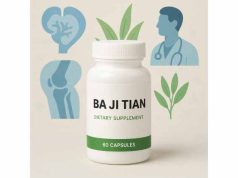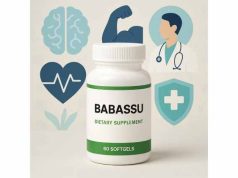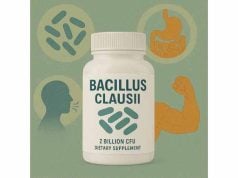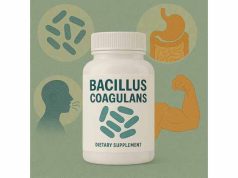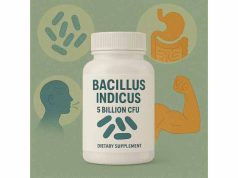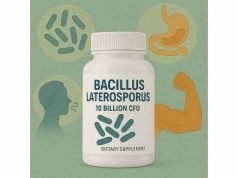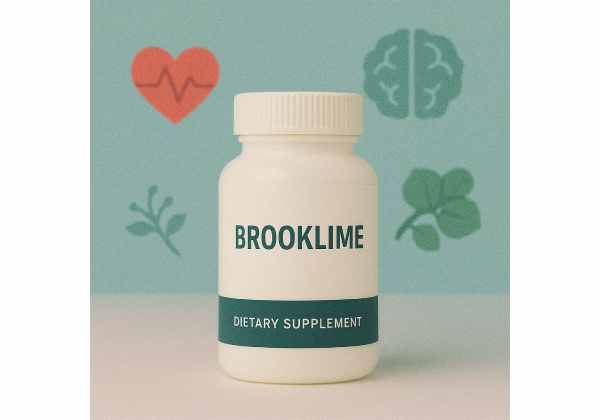
Brooklime, also known as Veronica beccabunga, is an overlooked yet powerful herb with a long tradition in natural wellness. Once a common addition to salads and tonics across Europe, brooklime has recently been rediscovered for its potential to support skin health, digestive function, and overall vitality. Packed with antioxidants, anti-inflammatory compounds, and essential micronutrients, brooklime is being studied for its ability to help soothe minor wounds, promote urinary health, and balance the body’s response to stress. Its gentle, multi-faceted nature makes it a choice for those seeking natural, plant-based supplements to boost daily wellness. Let’s explore what brooklime can do, the science behind its benefits, and how to use it safely and effectively.
Key Takeaways
- Brooklime is a nutrient-rich aquatic herb traditionally valued for skin, urinary, and digestive wellness.
- It contains antioxidants and natural anti-inflammatory compounds that may support wound healing and overall resilience.
- Best used as part of a balanced diet or gentle herbal protocol, not as a primary treatment for serious health issues.
- Side effects are rare but possible; always use high-quality products and consult with a healthcare provider if unsure.
- Brooklime’s historical and modern uses offer insight into its unique value among plant-based supplements.
Table of Contents
- Brooklime Plant Profile and Traditional Uses in Herbal Medicine
- How Brooklime Works: Bioactive Compounds and Scientific Actions
- Evidence-Supported Benefits of Brooklime for Health and Wellness
- Brooklime Safety Guide: Side Effects, Interactions, and Precautions
- Brooklime Dosage, Usage Recommendations, and Administration
- Brooklime FAQs: Your Top Questions Answered
Brooklime Plant Profile and Traditional Uses in Herbal Medicine
Brooklime (Veronica beccabunga) is a vibrant, semi-aquatic perennial native to Europe and western Asia. Often found flourishing along the banks of streams and ponds, brooklime is a member of the plantain family (Plantaginaceae) and is easily recognized by its glossy, bright-green leaves and clusters of small blue flowers.
A Botanical Overview
- Habitat: Brooklime thrives in moist, marshy environments and shallow water, which is why it’s sometimes referred to as “water pimpernel.”
- Appearance: Its trailing stems and thick, fleshy leaves make it a striking feature of wetlands, with blue or violet blooms appearing from late spring to midsummer.
- Edibility: Both the leaves and young stems are edible, with a slightly peppery, tangy flavor that made brooklime a popular addition to traditional wild salads.
Historical and Folk Uses
Brooklime’s use as a healing herb stretches back centuries. In European folk medicine, it was commonly recommended:
- For Skin Health: Poultices or infusions were applied to minor wounds, rashes, and eczema.
- To Promote Digestion: It was eaten fresh or brewed as a tea to “cool” the digestive tract and relieve mild discomfort or sluggishness.
- As a Spring Tonic: Rich in vitamins and minerals, brooklime was used after winter to replenish nutrients, support liver health, and “cleanse the blood.”
- For Urinary Health: Its mild diuretic properties made it a remedy for water retention, mild urinary discomfort, and as part of kidney “cleansing” protocols.
Culinary Use in the Past
For centuries, fresh brooklime leaves were mixed with watercress and other wild greens in the famous “herb salads” of England, Scotland, and Ireland. Its crisp texture and refreshing flavor made it a valued spring ingredient before cultivated greens were widely available.
Transition to Modern Herbalism
While less prominent today, brooklime is seeing renewed interest among herbalists and holistic practitioners. Modern supplement forms include dried herb, capsules, tinctures, and topical creams—each aiming to harness brooklime’s traditional wellness roles for today’s needs.
Key Traditional Insights
- Gentle Action: Unlike more potent medicinal herbs, brooklime’s effects are considered gentle, making it suitable for longer-term use or for those seeking mild support.
- Synergistic Use: Often combined with other herbs such as watercress, dandelion, or nettle for enhanced tonic and cleansing effects.
- Accessible Nutrition: As a foraged wild green, brooklime provided valuable micronutrients—vitamin C, potassium, magnesium, and trace antioxidants—at a time when food diversity was limited.
Summary
Brooklime’s enduring presence in herbal traditions highlights its value as a gentle, multi-purpose plant ally. Whether used for skin, digestion, urinary health, or simply as a nutrient-rich green, brooklime offers a bridge between folk wisdom and modern supplement science.
How Brooklime Works: Bioactive Compounds and Scientific Actions
The benefits of brooklime arise from a rich blend of natural compounds that work together to support health in subtle yet meaningful ways. While modern research on brooklime is limited compared to more common herbs, what we do know helps explain its traditional roles and emerging applications.
Primary Bioactive Components
- Antioxidants: Brooklime contains vitamin C, flavonoids (like rutin and luteolin), and polyphenols. These help neutralize free radicals, protecting cells from oxidative damage and supporting the body’s natural repair processes.
- Anti-Inflammatory Agents: Certain phenolic compounds and glycosides found in brooklime have shown anti-inflammatory effects in preliminary studies, which may help explain its soothing action for skin and internal tissues.
- Mucilaginous Compounds: The plant’s soft, fleshy leaves contain mucilage, a slippery, soothing substance that can calm irritated mucous membranes in the digestive and urinary tract.
- Minerals and Micronutrients: Brooklime offers potassium, magnesium, calcium, and trace elements essential for cellular balance, hydration, and overall wellness.
How Brooklime Influences the Body
- Skin Health and Wound Healing: Applied topically, brooklime’s antioxidants and soothing phytochemicals can support the healing of minor cuts, rashes, or insect bites. They help reduce redness and protect skin cells from environmental stress.
- Digestive Comfort: The mucilage in brooklime acts as a demulcent—coating and calming inflamed tissues in the gut. Combined with antioxidants, this can provide gentle relief from mild digestive irritation or “heat.”
- Detoxification and Cleansing: Brooklime’s mild diuretic action encourages the body to eliminate excess fluids and metabolic waste, supporting the kidneys and urinary tract.
- Immune Support: Antioxidants and micronutrients help strengthen the immune response, particularly during seasonal changes or after illness.
- Stress Adaptation: As a traditional “tonic,” brooklime may help restore balance after periods of stress, fatigue, or nutrient depletion.
Synergistic Effects with Other Herbs
Brooklime’s benefits are often enhanced when combined with other spring greens, such as watercress, chickweed, or nettle. These combinations provide a spectrum of phytonutrients that support overall wellness, digestion, and resilience.
Modern Scientific Insights
- While large-scale clinical studies on brooklime are limited, early research and phytochemical analysis suggest that its traditional uses are supported by real, measurable actions.
- Scientists are exploring brooklime’s role in protecting against oxidative stress and inflammation, with potential implications for skin, gut, and urinary health.
- As interest in wild and “forgotten” herbs grows, more research is likely to uncover additional benefits and mechanisms.
Summary
Brooklime’s gentle power comes from its blend of antioxidants, anti-inflammatory compounds, and soothing mucilage. Its actions, while subtle, can contribute to the body’s ability to heal, adapt, and stay balanced—especially when included as part of a diverse, plant-rich lifestyle.
Evidence-Supported Benefits of Brooklime for Health and Wellness
Brooklime has been a trusted herb for centuries, but how does its traditional reputation hold up against modern science? While clinical research is still catching up, there is a growing body of evidence and experience supporting brooklime’s wellness benefits.
1. Skin Health and Minor Wound Care
- Topical Use: Brooklime poultices and creams are used to help soothe eczema, rashes, and minor abrasions. Its antioxidants and anti-inflammatory compounds may reduce redness and support skin’s natural healing processes.
- Daily Skin Resilience: Consuming brooklime or using it in a topical formula may help protect skin from environmental stressors, thanks to its vitamin C and flavonoid content.
2. Digestive Comfort and Gut Support
- Gentle Relief: The mucilage in brooklime coats the digestive tract, helping to ease minor discomfort, heartburn, or irritation—particularly helpful after rich or spicy meals.
- Tonic for the Gut: Brooklime was traditionally consumed as a spring green to restore digestive balance after the heavy foods of winter.
3. Urinary and Kidney Support
- Mild Diuretic: Brooklime promotes gentle elimination of fluids, supporting the kidneys and urinary tract. It’s often used in blends for urinary “cleansing” or to relieve minor water retention.
- Comfort for Irritation: The soothing mucilage may help reduce discomfort during minor urinary irritation.
4. Detoxification and Nutritional Boost
- Spring Cleanse: In European herbalism, brooklime was part of seasonal detox routines. Its vitamin and mineral profile supports the liver, helps the body process waste, and provides a natural boost of nutrients.
- Post-Illness Recovery: As a source of antioxidants and micronutrients, brooklime can help restore vitality after illness or periods of stress.
5. Stress Adaptation and General Wellness
- Balancing Herb: Traditional healers considered brooklime a “balancer” for the body, helping people adapt to changes in season, diet, or environment.
- Mood and Energy: Some users report improved energy and mood when including brooklime in their diets, likely due to its combination of nutrients and gentle tonic effects.
6. Culinary and Lifestyle Benefits
- Nutritious Wild Green: Fresh brooklime is a flavorful, nutrient-rich addition to salads, soups, and smoothies. It brings diversity to the diet and supports holistic wellbeing.
- Synergistic Use: Combining brooklime with other wild greens amplifies its effects and enhances overall health benefits.
Limitations and Considerations
- Brooklime should not replace medical treatment for serious or chronic conditions. Its benefits are best viewed as supportive and preventive.
- Quality and potency can vary. Always choose reputable sources for supplements or fresh herbs.
Summary
Brooklime is a gentle but effective plant ally for skin, digestion, urinary, and overall wellness. Its unique combination of nutrients and traditional uses position it as an accessible option for those looking to integrate more plant-based, holistic strategies into daily life.
Brooklime Safety Guide: Side Effects, Interactions, and Precautions
Brooklime is generally recognized as a gentle, well-tolerated herb, making it appealing for daily wellness routines and long-term use. However, as with any supplement or botanical, safety should always be a priority. Understanding potential side effects, interactions, and best practices helps ensure brooklime remains a positive addition to your health regimen.
General Safety and Tolerability
For most people, brooklime causes little to no side effects, especially when consumed as part of a balanced diet or in moderate supplemental doses. Its mild action is one reason it was so widely used in traditional herbal tonics. However, individual responses can vary depending on sensitivities, dosage, and any underlying health conditions.
Potential Side Effects
- Digestive Upset: Some sensitive users may experience mild stomach discomfort, especially if consuming brooklime in large quantities or on an empty stomach. Symptoms typically include nausea or loose stools and usually resolve with reduced dosage.
- Allergic Reactions: Although rare, individuals allergic to plants in the Plantaginaceae family or with a history of plant allergies should exercise caution. Watch for skin rashes, itching, swelling, or difficulty breathing and seek medical help if symptoms occur.
- Mild Diuretic Effect: Due to brooklime’s gentle diuretic properties, increased urination may be noticed, particularly if taken in concentrated form or alongside other diuretics.
Drug and Supplement Interactions
- Diuretics: Brooklime may enhance the effects of prescription or natural diuretics, potentially leading to increased fluid loss or electrolyte imbalance. Those on diuretic medications should consult their healthcare provider before using brooklime supplements.
- Lithium: As with other diuretic herbs, brooklime may affect the body’s processing of lithium, potentially increasing its concentration in the blood.
- Other Botanicals: When combined with herbs such as dandelion, nettle, or watercress, brooklime’s diuretic or cleansing effects may be amplified. This can be beneficial but may also warrant closer monitoring.
Precautions for Special Populations
- Pregnancy and Breastfeeding: There is insufficient research on brooklime’s safety during pregnancy or lactation. While occasional culinary use in salads is likely safe, concentrated supplements should be avoided unless prescribed by a qualified practitioner.
- Children: The gentle nature of brooklime makes it occasionally used in mild herbal blends for children, but always under professional supervision and never in high doses.
- Kidney or Heart Conditions: Because of its diuretic action, those with kidney disorders, heart conditions, or those taking related medications should speak with a healthcare provider before using brooklime in any significant amount.
Best Practices for Safe Use
- Start with Small Doses: Especially when trying a new herb, begin with the lowest recommended dose and gradually increase if well-tolerated.
- Choose High-Quality Products: Ensure your brooklime comes from a reputable supplier, free from contaminants or adulterants.
- Monitor for Reactions: Pay attention to your body, especially in the first week of use. Discontinue immediately if you notice any unexpected symptoms.
- Consult with a Professional: If you have ongoing medical conditions, are taking prescription drugs, or are pregnant or breastfeeding, seek guidance before starting brooklime supplements.
Overuse and Toxicity
Brooklime has a very low toxicity profile. There are no well-documented cases of overdose, but excessive consumption of any diuretic herb could lead to dehydration or mineral imbalances if not monitored. Moderation and mindfulness are key.
Summary
Brooklime stands out as a safe, gentle, and versatile herb for most users. However, personal health circumstances, medication use, and dosage must be considered. With proper care, brooklime can be enjoyed as a nourishing supplement with minimal risk.
Brooklime Dosage, Usage Recommendations, and Administration
Optimal use of brooklime depends on the desired outcome, method of preparation, and individual health status. Since brooklime is available as a fresh herb, dried powder, tincture, and sometimes in capsule form, understanding the right dose and how to incorporate it into your routine is important for best results.
Common Forms of Brooklime Supplements
- Fresh or Dried Herb: Used in salads, soups, or brewed as tea.
- Capsules/Tablets: Standardized doses for convenience and consistency.
- Tincture/Extract: Alcohol- or glycerin-based extracts provide a concentrated dose, easy to add to water or juice.
- Topical Creams or Ointments: For skin health and minor wounds.
Recommended Dosage Ranges
- Fresh Leaves (Culinary Use): 10–30 grams per day, added to salads or smoothies. This is safe for most adults and provides nutrients and mild detox support.
- Dried Herb (Tea): 1–2 teaspoons (about 2–4 grams) per cup of boiling water, steeped for 10 minutes and consumed up to twice daily.
- Capsules/Tablets: 300–600 mg, one to two times per day, depending on product strength and desired effect.
- Tincture/Extract: 1–2 ml, up to three times per day. Always check manufacturer guidelines.
How to Take Brooklime
- With Meals: Incorporating brooklime into food is a traditional and effective way to enjoy its benefits while supporting gentle digestion.
- On an Empty Stomach: For more pronounced diuretic or detox effects, some users prefer taking tea or tincture between meals.
- Topically: Clean the affected skin area, apply a small amount of cream or fresh juice, and let it absorb. Repeat as needed for minor skin issues.
Maximizing Benefits
- Combine with Other Herbs: Blend brooklime with watercress, nettle, or dandelion for enhanced cleansing or spring tonic effects.
- Stay Hydrated: Especially when using brooklime for its diuretic properties, drink plenty of water to maintain electrolyte balance.
- Cycle Usage: For seasonal cleansing or “reset,” use brooklime for 2–4 weeks, then take a break. For ongoing skin or digestive support, long-term moderate use is safe for most people.
Adjusting for Individual Needs
- Sensitive Individuals: Start with half the usual dose and increase gradually.
- Older Adults or Those on Medication: Use lower doses and consult with a health professional.
- Children: Use only under the guidance of a knowledgeable herbalist or practitioner, and always in very small amounts.
Signs to Reduce or Stop Use
- New or worsening digestive symptoms (nausea, diarrhea)
- Signs of allergy (rash, swelling)
- Excessive thirst or dehydration
Summary
Brooklime is easy to add to your diet as a food or supplement. Proper dosage and thoughtful use, tailored to your needs, can help you enjoy its full benefits while minimizing any risks. As always, quality and professional guidance are the foundation of safe and effective herbal supplementation.
Brooklime FAQs: Your Top Questions Answered
What are the main health benefits of brooklime supplements?
Brooklime supplements offer gentle support for skin health, urinary and digestive comfort, mild detoxification, and antioxidant protection. Many users choose brooklime to complement spring cleanses, aid minor skin issues, and provide extra nutrients in their daily routine.
Is brooklime safe to take every day?
For most healthy adults, moderate daily use of brooklime as a fresh green or supplement is safe. Long-term culinary use has a strong tradition, but concentrated extracts or capsules should be used according to product directions and individual health needs.
Can brooklime interact with medications?
Brooklime may interact with diuretics, lithium, or other herbs with similar effects. If you take prescription medications or have health concerns, consult your healthcare provider before starting brooklime supplements.
How is brooklime typically consumed or used?
Brooklime can be eaten raw in salads, brewed as a tea, taken as a capsule, or used topically for minor skin irritations. Combining with other greens can maximize benefits and nutritional value.
Are there any side effects of brooklime supplements?
Side effects are rare but may include mild digestive upset, increased urination, or in rare cases, allergic reactions. Start with low doses, and discontinue use if you experience any unusual symptoms.
Can children or pregnant women use brooklime?
Fresh brooklime in small culinary amounts is generally considered safe for most people. However, concentrated supplements are not recommended for pregnant women or children without medical supervision due to limited safety data.
How do I choose a high-quality brooklime supplement?
Look for reputable brands, transparent ingredient sourcing, and products that are free from contaminants or fillers. Freshness, potency, and third-party testing are important factors for safe and effective supplementation.
Disclaimer:
This article is for informational and educational purposes only. It does not substitute for medical advice, diagnosis, or treatment. Always consult a healthcare professional before starting any new supplement, especially if you have a medical condition, are pregnant, breastfeeding, or taking prescription medication. Individual responses may vary.
If you found this guide to brooklime useful, please share it on Facebook, X (formerly Twitter), or your favorite platform—and follow us for more practical, plant-based wellness content. Your support helps us continue creating high-quality, evidence-based health articles—thank you!

